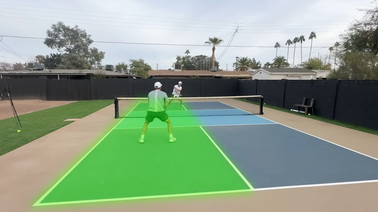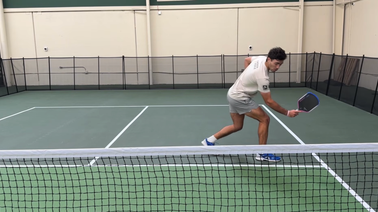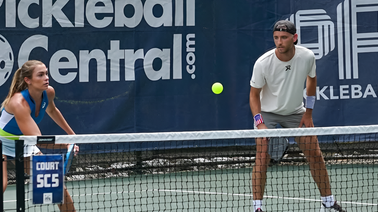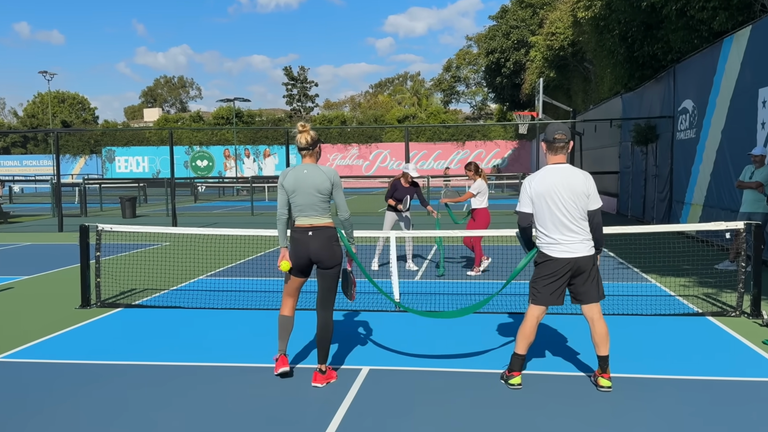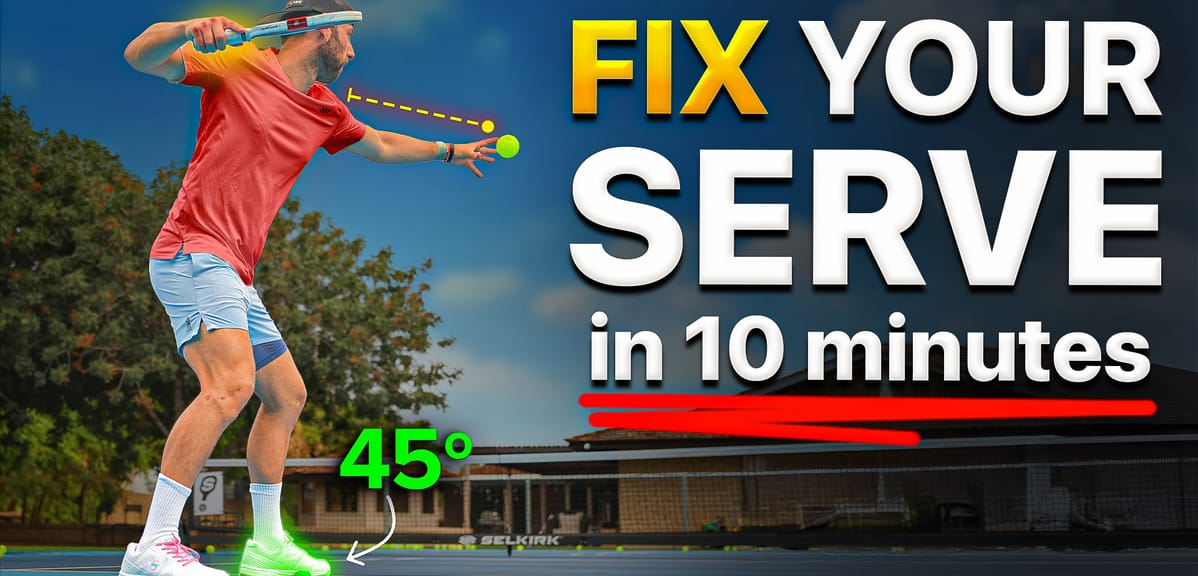
Fix Your Pickleball Serve Forever: The 3 Mistakes Holding You Back
Gain consistent, effortless power on your serve by fixing these three critical mistakes seen at every level. APP pro Kyle Koszuta shows you how.
Kyle Koszuta just dropped a masterclass on what's actually sabotaging your serve. And honestly? Most of us are making at least one of these mistakes every single time we step on the court.
The serve is supposed to be your most controllable shot. You're not reacting to anything. You're not scrambling. You've got all the time in the world to set up, breathe, and execute.
Heads up: hundreds of thousands of pickleballers read our free newsletter. Subscribe here for cutting edge strategy, insider news, pro analysis, the latest product innovations and more.
Yet somehow, it's the shot that trips up players at every level.
Koszuta's latest video breaks down exactly why that happens, and more importantly, how to fix it.
1. You're Standing Too Narrow (And Losing All Your Power)
A narrow serve stance isn't just uncomfortable, it's actively working against you. When your feet are too close together, you lose stability and hurt your ability to transfer weight into the ball.
Koszuta recommends setting up with your front foot (left foot if you're right-handed) at about a 45-degree angle toward the baseline, while your back foot stays roughly parallel to the baseline. This creates what he calls a "power base." The wider your stance, the more stable you become, and the more you can shift your weight forward into the serve.
"You want to have an expectation that you might get pushed," Koszuta explains in the video. That's the sweet spot. Your feet should be wide enough that if someone gave you a gentle shove, you'd stay planted. Not so wide that you look ridiculous, but wide enough to matter.
2. You're Jamming Your Release (The T-Rex Serve Nobody Wants)
This one's almost funny until you realize you're probably doing it. Koszuta calls it the "T-Rex serve," and once you see it, you can't unsee it.
What happens is your elbow gets tucked too close to your body, and the ball ends up right on top of you. When you go to hit it, both your arms are compressed, and you're essentially swinging like a dinosaur with tiny arms. It looks ridiculous, and it performs even worse.
The fix? You need extension. Not just any extension, but the kind that forces you to reach for the ball.
Koszuta uses a golf analogy that's pretty perfect:
- When you're putting, the club is close to your body because you're not trying to hit it far.
- But when you're driving off the tee, you grab the longest club in your bag because that distance from your body allows you to accelerate the club head faster.
Same concept in pickleball. You want the ball positioned far enough away that you have to reach a bit to get it. This creates space, and space is what allows you to accelerate your paddle. Faster paddle speed equals harder, farther serves.
But here's where it gets interesting: it's not just about reaching away from your body. It's about getting the ball out in front of you.
"The more you go out and get it, the more you're going to generate topspin," Koszuta says. It's one of those things that sounds simple until you try it and realize how much it changes your serve.
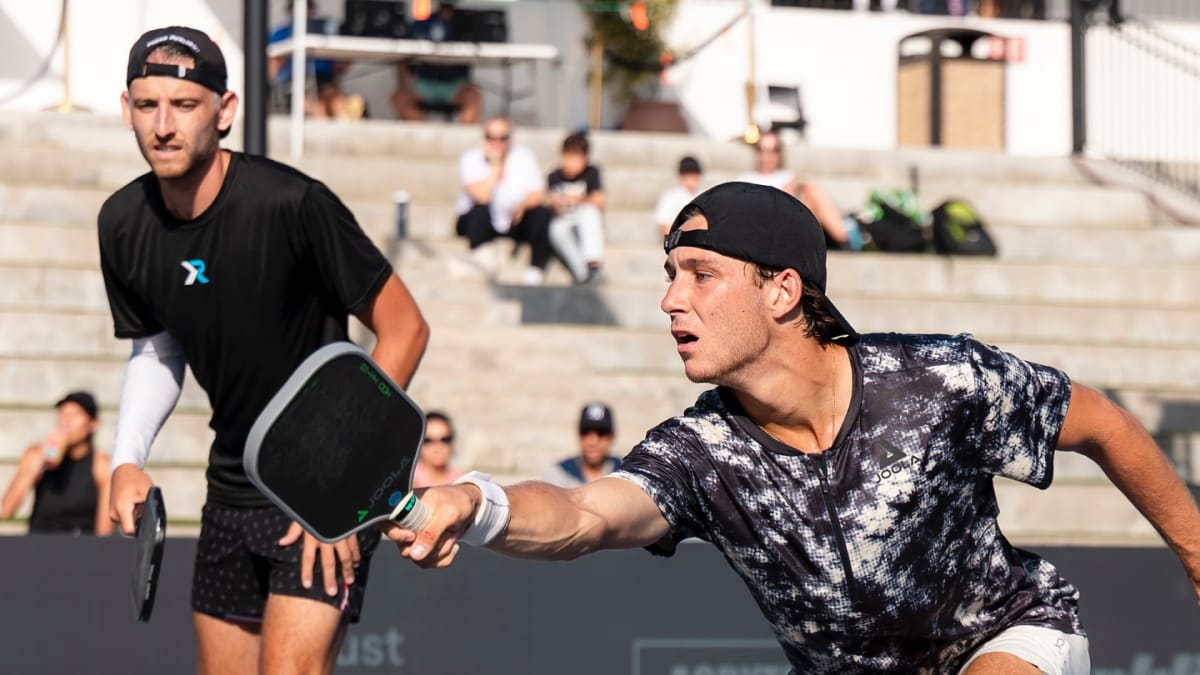
3. You're Using Only Your Arm (And Leaving Power on the Table)
This is probably the most common mistake, especially among players who didn't grow up playing tennis. When we decide to hit something harder, our instinct is to swing faster with our arm. That's it. Just more arm.
But that's generating what Koszuta calls "effortful power," not "effortless power." And there's a massive difference.
Think of one of those wind-up toy cars. You wind up the wheels, release it, and there's this explosion of energy that sends it flying across the room. That's what you want your serve to feel like. Instead of just keeping your body still and swinging harder with your arm, you need to create a coil with your entire body.

Here's where rotational power comes in.
- When you set up in that wide power base we talked about earlier, and you extend the ball out in front, you've created the conditions for core rotation.
- Your paddle-side body rotates away from your target and then explosively rotates back toward it.
- Your right foot (if you're right-handed) should actually step into the court as you finish.
You can check yourself on this pretty easily. If you're hitting with pure arm swing, your back foot stays planted. Your body doesn't rotate. But when you're generating rotational power, your paddle-side body finishes toward your target, and your back foot comes off the ground.
"The power becomes exponentially greater by just adding core rotation," Koszuta explains. And he's right. Every other sport that requires power generation uses rotation. Golf, football, basketball. Why would pickleball be any different?
The bonus here? Rotation naturally generates topspin. You don't have to think about it. You don't have to manipulate your paddle face. Just focus on the contact point, and the rotation does the rest.
The Bigger Picture: Why These Three Things Matter Together
What's clever about Koszuta's breakdown is that these three mistakes aren't isolated problems. They're interconnected. A narrow stance prevents rotation. A jammed release prevents extension. And without extension and rotation, you're stuck with arm power.
Fix all three, and your serve transforms. You're not just hitting harder. You're hitting with more control, more consistency, and more topspin. You're generating power that feels effortless because it actually is.
If you're serious about improving your serve, this is worth watching. And if you're already doing these things right? Well, you're probably already winning more matches than you used to.
About the Source
This article is based on a video from ThatPickleballGuy - Kyle Koszuta, a professional pickleball player and founder of ThatPickleballSchool.com. Koszuta went from a 3.5-level player to an APP Tour two-time medalist in about three years and now coaches over 1,000 members through his online training platform.
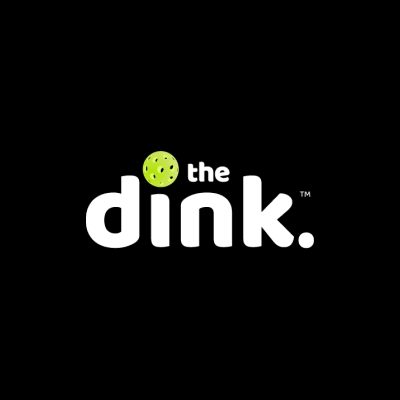
Love Pickleball? Join 100k+ readers for free weekly tips, news & gear deals.
Subscribe to The DinkGet 15% off pickleball gear at Midwest Raquet Sports




